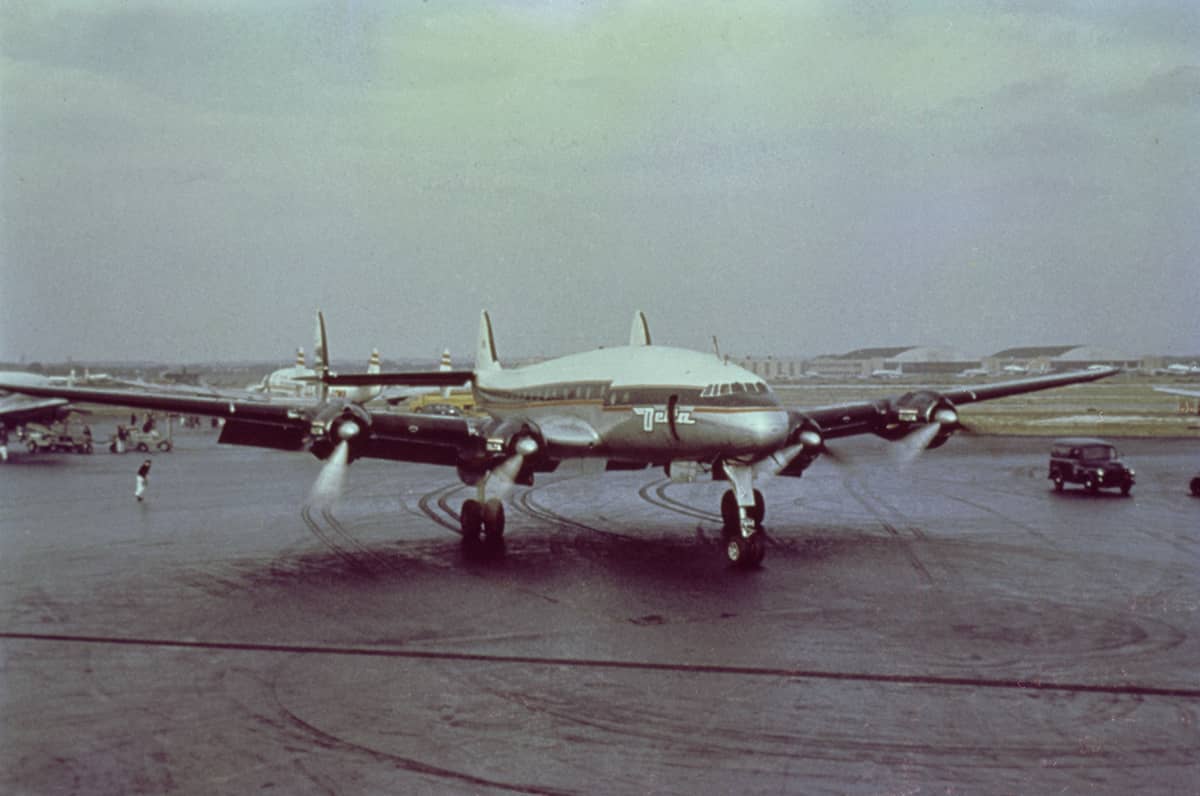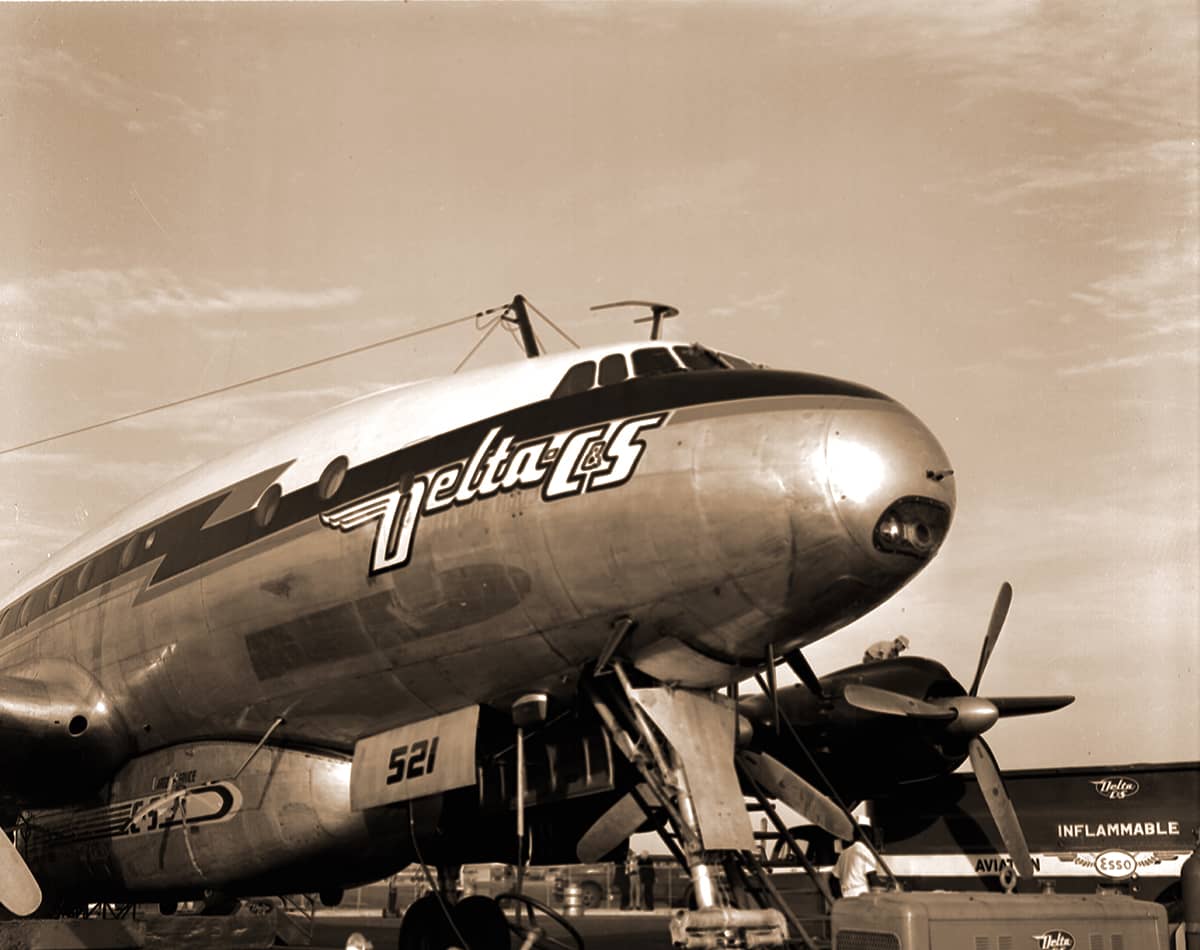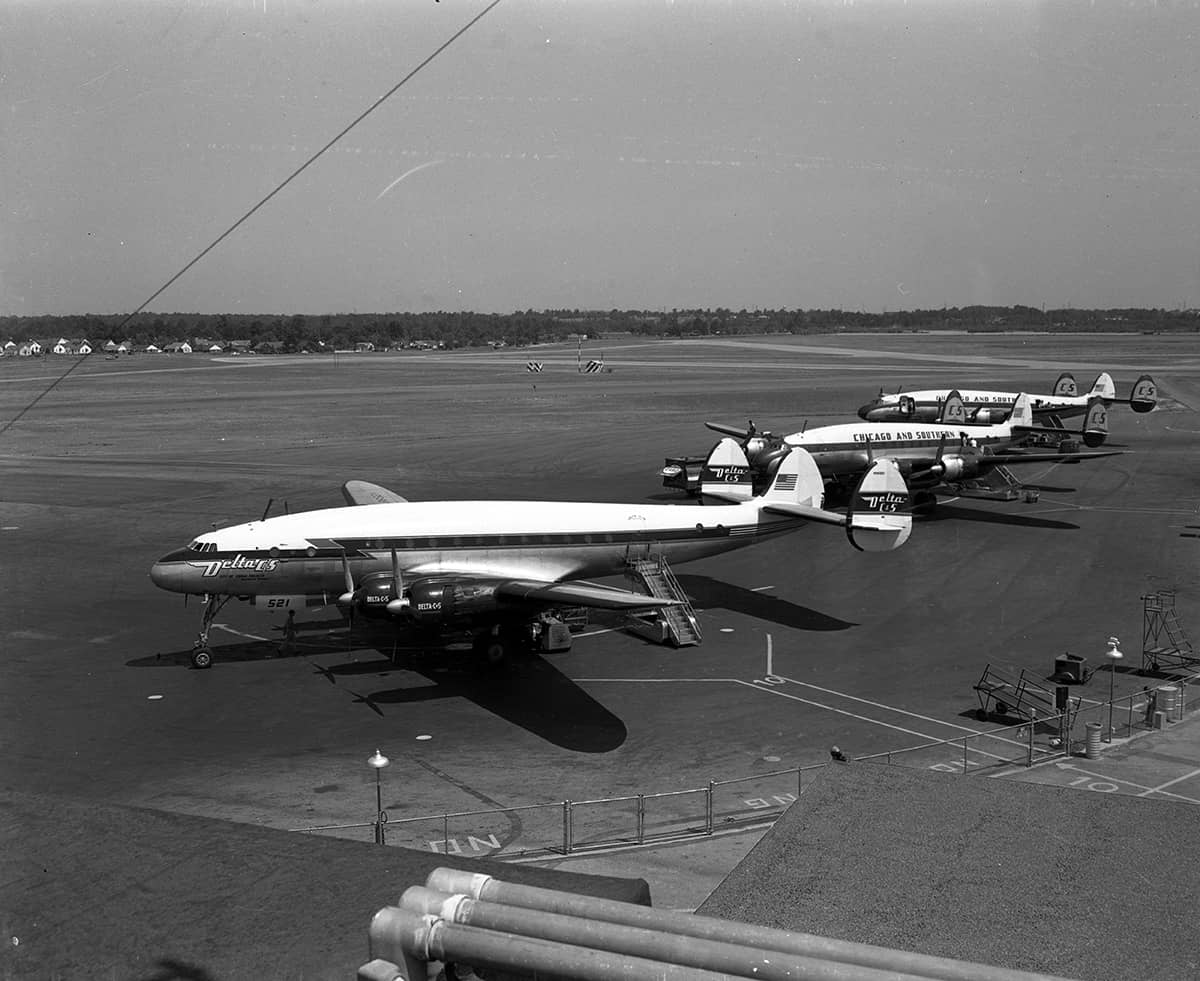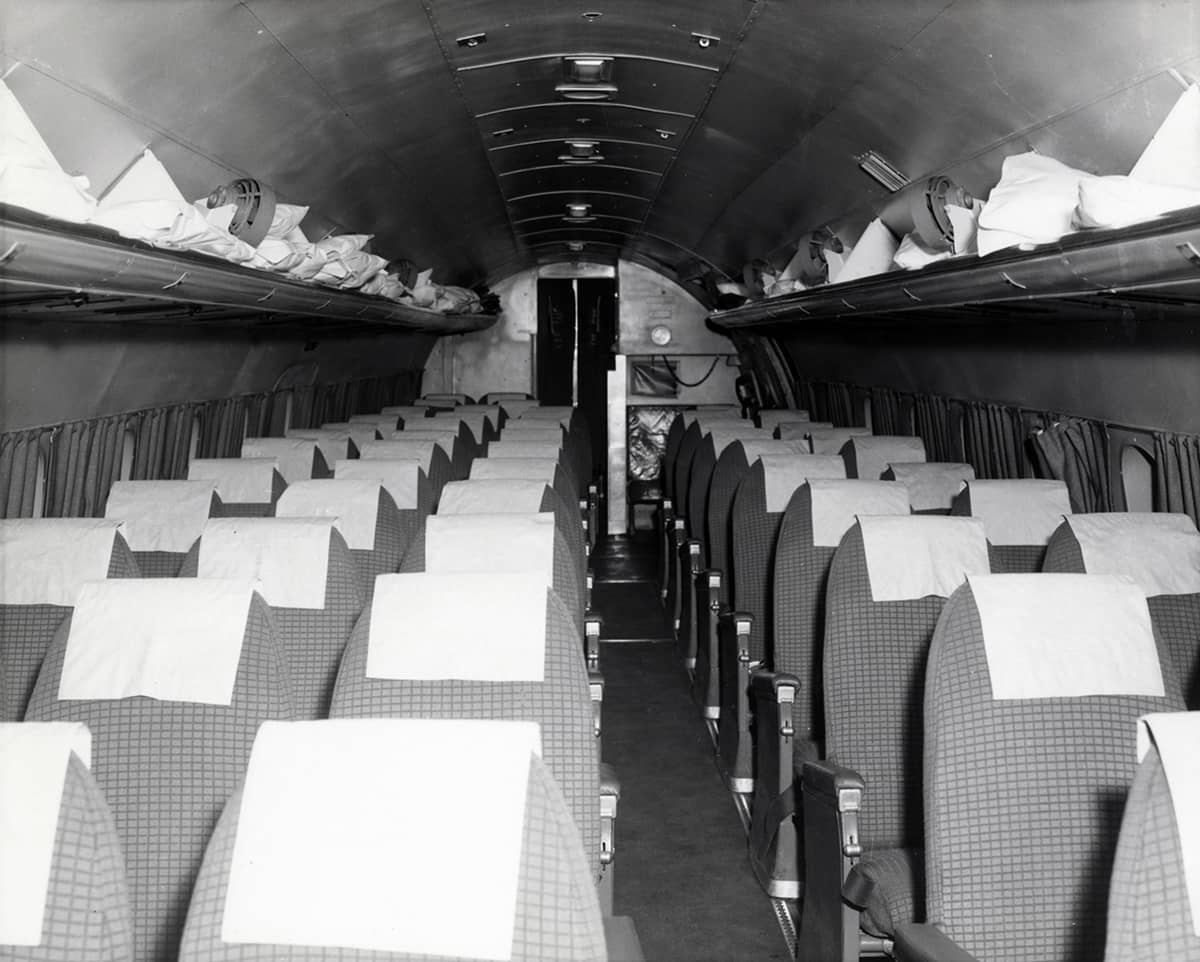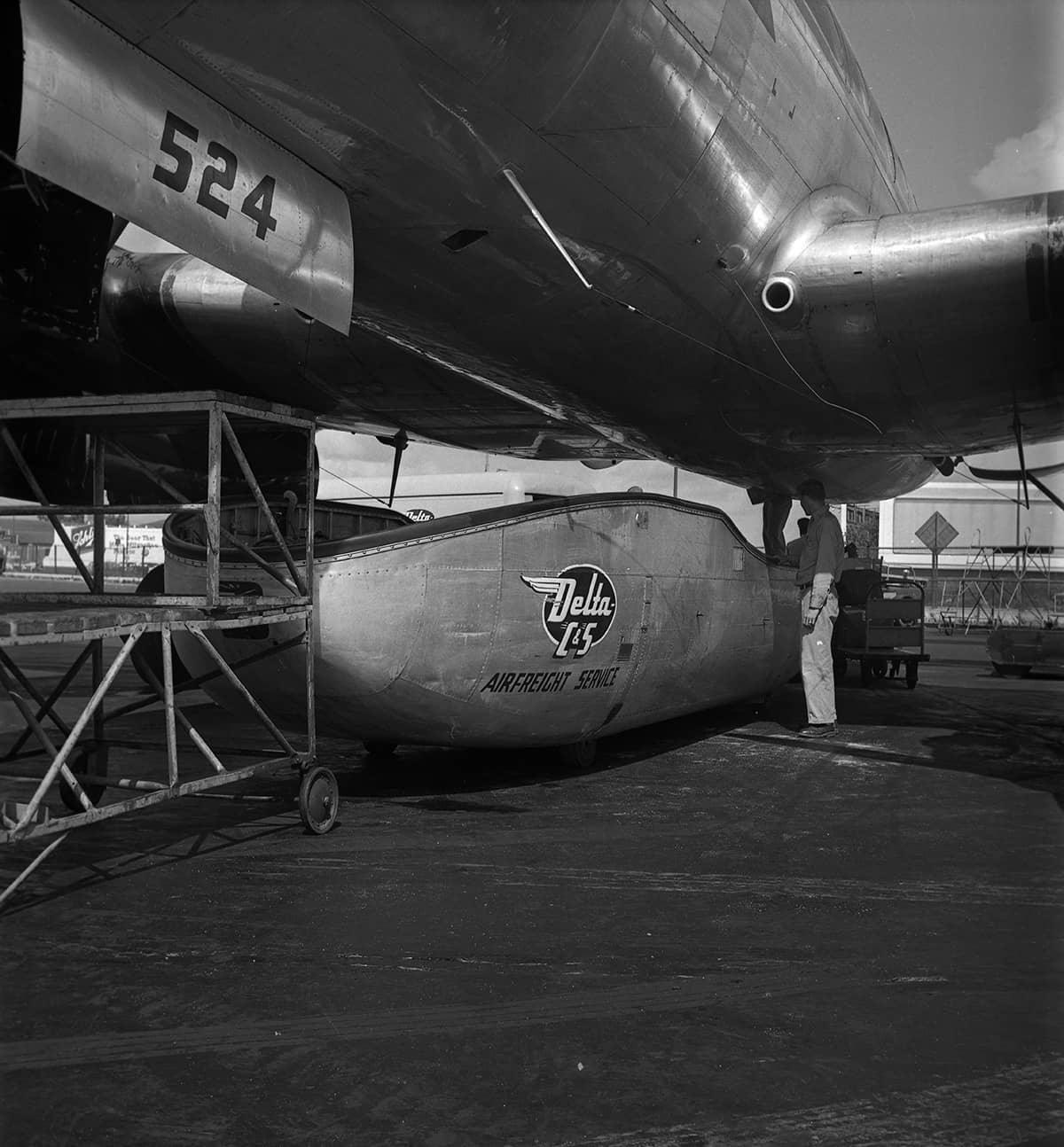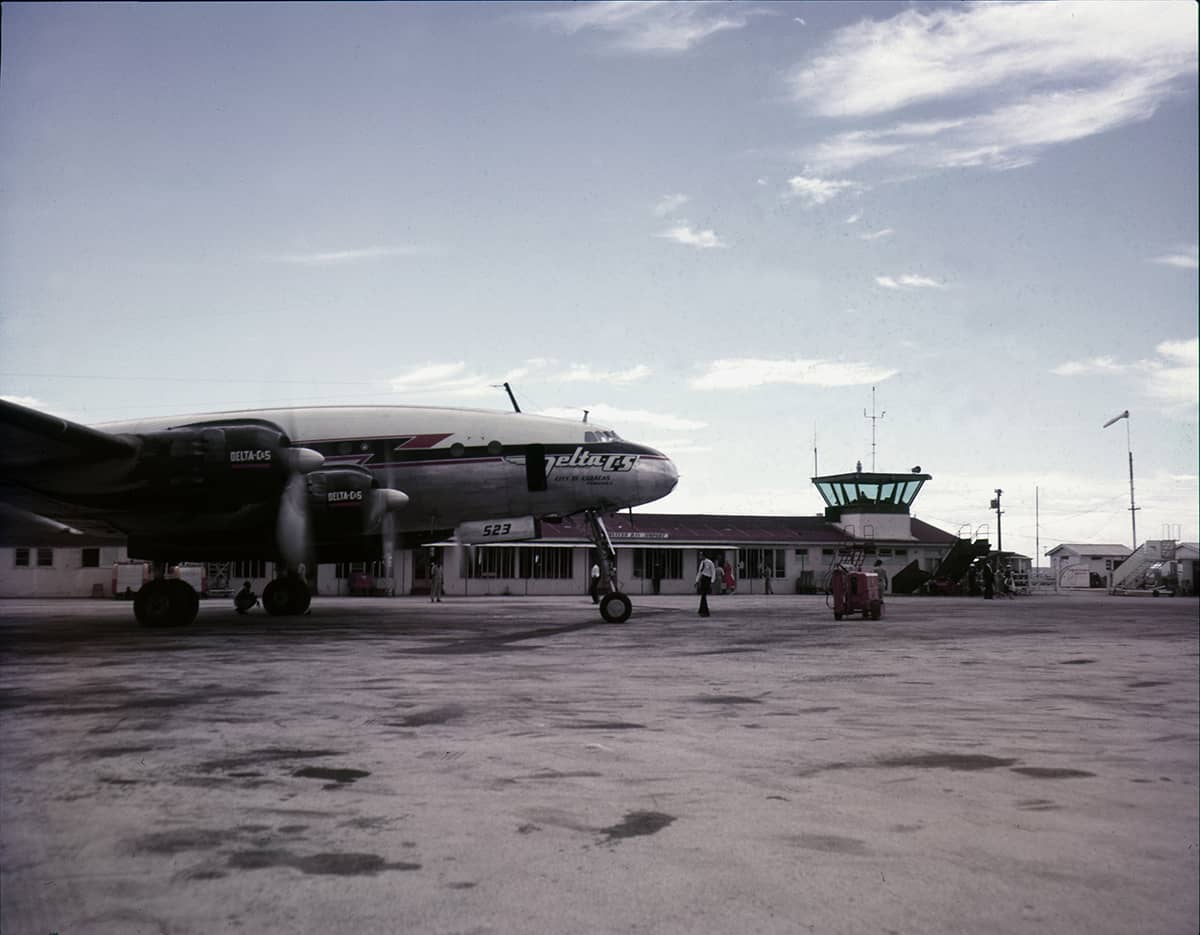Narrative: Lockheed Constellation 1953-1958
Technical Advances
At the instigation of
Howard Hughes in 1939, Lockheed developed the graceful and powerful
Constellation: a pressurized aircraft with nonstop transcontinental capability. The "Connie" was designated by Lockheed as the Model 49, and delivered to the U.S. Army Air Force at the end of World War II as military C-69s.
Model 649 was the
first Connie intended solely for civilian service. The -649A added reinforced wing panels and heavier landing gear. It could carry 4,000 pounds more payload than the original -49 model.
Model 749, first delivered in June 1947, could carry 8,000
pounds over the -49, allowing 40 more passengers or several hundred miles of range. Model 749A could carry a payload of 107,000 pounds.
Speedpak Service
The speedpak, a removable container which incorporated an electronic winch, attached to the underside of the Constellation's fuselage. It could be raised or lowered in approximately one minute. Offered additional bag and cargo space easily accessible for loading.
First Delta Connies
In the late 1940s, Delta considered the Lockheed Constellation, but decided instead to purchase the Douglas DC-6, which was similar in speed and range, but lower in cost and had a roomer cockpit that initially only required the customary two pilots (federal regulations later changed), while the Connie required three crew members–pilot, co-pilot and flight engineer.
Delta acquired its first Connies—five Model 649As and one Model 749A—from the merger with Chicago and Southern Air Lines, effective May 1, 1953. Delta converted the Model 649As to Model 749As, and by June 1954, had leased or sold all the former C&S Connies.
